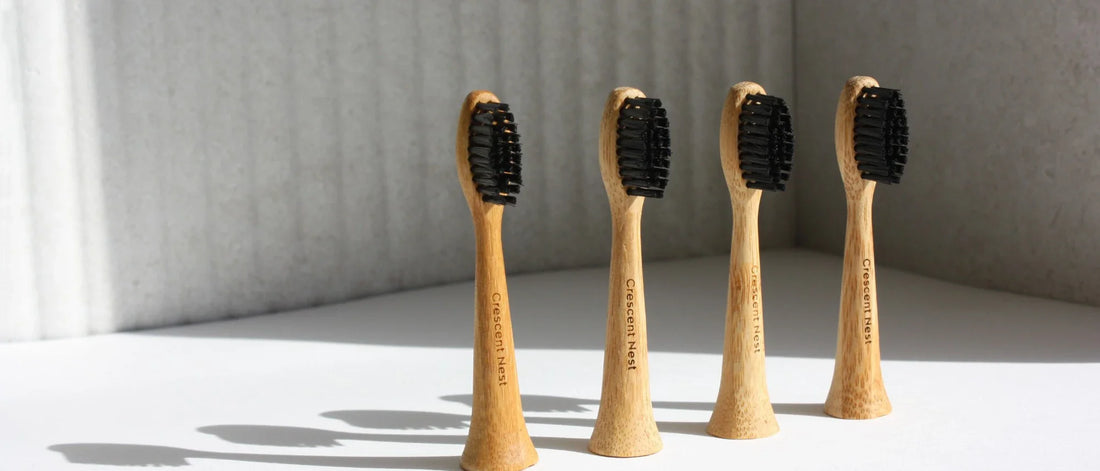
Beyond the Hype: Is Bamboo Truly Sustainable?
Share
When shoppers search for a sustainable electric toothbrush, bamboo shows up everywhere. But is it genuinely greener or just clever marketing? Below, we put the material under a microscope, comparing it with wood and plastic on renewability, carbon capture and end-of-life impact.
1.Bamboo’s Renewal Rate Leaves Trees in the Dust
- Harvest cycle:* 3–5 years (pine can take 10–20).
- Re-planting needed:* none new shoots sprout from the same root network.
Less soil disturbance means fewer fertilisers and lower machinery emissions.
2. Carbon Capture: A Silent Climate Workhorse
An established bamboo stand can lock away up to seven tonnes of CO₂ per hectare each year, roughly double the rate of mature hardwood forests. Faster biomass turnover pulls carbon out of the air sooner.
3. More Material, Less Land
Bamboo produces about four times more usable fibre per hectare than typical timber species. For eco-friendly oral care brands like Crescent Nest, that translates to lower pressure on forests and farmland.
4. Low-Impact Processing Suits Small Products
Harvesting requires minimal mechanisation. The culms are kiln-dried at relatively low temperatures, machined, sealed with a plant-based finish and fitted with DuPont™ bristles no petroleum feedstock, harsh solvents or energy-intensive moulding.
5. Strength and Durability You Can Feel
Bamboo’s tensile strength-to-weight ratio rivals steel, giving your eco friendly electric toothbrush head the rigidity it needs to last the recommended 2–3 months without splintering or warping.
6. End-of-Life: Compost Instead of Landfill
- Bamboo head: Industrial- or home-compostable in 6–12 months.
- Virgin plastic head: Never biodegrades; at best, it’s down-cycled once.
Pro tip: snap off the head, pull the bristles with pliers and compost the bamboo body. The tiny nylon bundle can go in household waste until municipal nylon recycling reaches scale.
7. Bamboo vs Plastic Toothbrush Quick Scorecard
|
Factor |
Bamboo Head |
Virgin Plastic Head |
|
CO₂ footprint |
Low |
High |
|
Renewable |
✓ |
× |
|
Compostable |
✓ |
× |
|
Durability (2–3 months) |
✓ |
✓ |
|
Factor |
Bamboo Head |
Virgin Plastic Head |
|
Aesthetic |
Natural |
Synthetic |
8. What This Means for Your Oral-Care Routine
Swap plastic for a sustainable electric toothbrush with bamboo replacement heads. Compost them every quarter to close the loop and share your progress small daily habits add up to large-scale impact.
Ready to brush better? Visit crescentnest.com and meet the toothbrush that treats both your smile and the planet with respect.
FAQs
Are bamboo heads compatible with Philips Sonicare®?
Yes. Crescent Nest Bamboo brush heads that clicks straight onto most Sonicare handles.
How do I recycle or compost the head?
Remove the bristles, then compost the bamboo. Dispose of the small bristle bundle in household rubbish if nylon recycling isn’t available.
Is recycled plastic just as green?
Recycled plastic lowers virgin demand but never biodegrades. Bamboo captures carbon while it grows and returns safely to the earth when composted, giving it the edge for products that touch your mouth every day.
Key Takeaways
Bamboo renews itself within five years; most trees need decades.
It captures more carbon and yields more fibre per hectare than timber.
Low-energy processing and composability make bamboo ideal for an eco-friendly electric toothbrush.



